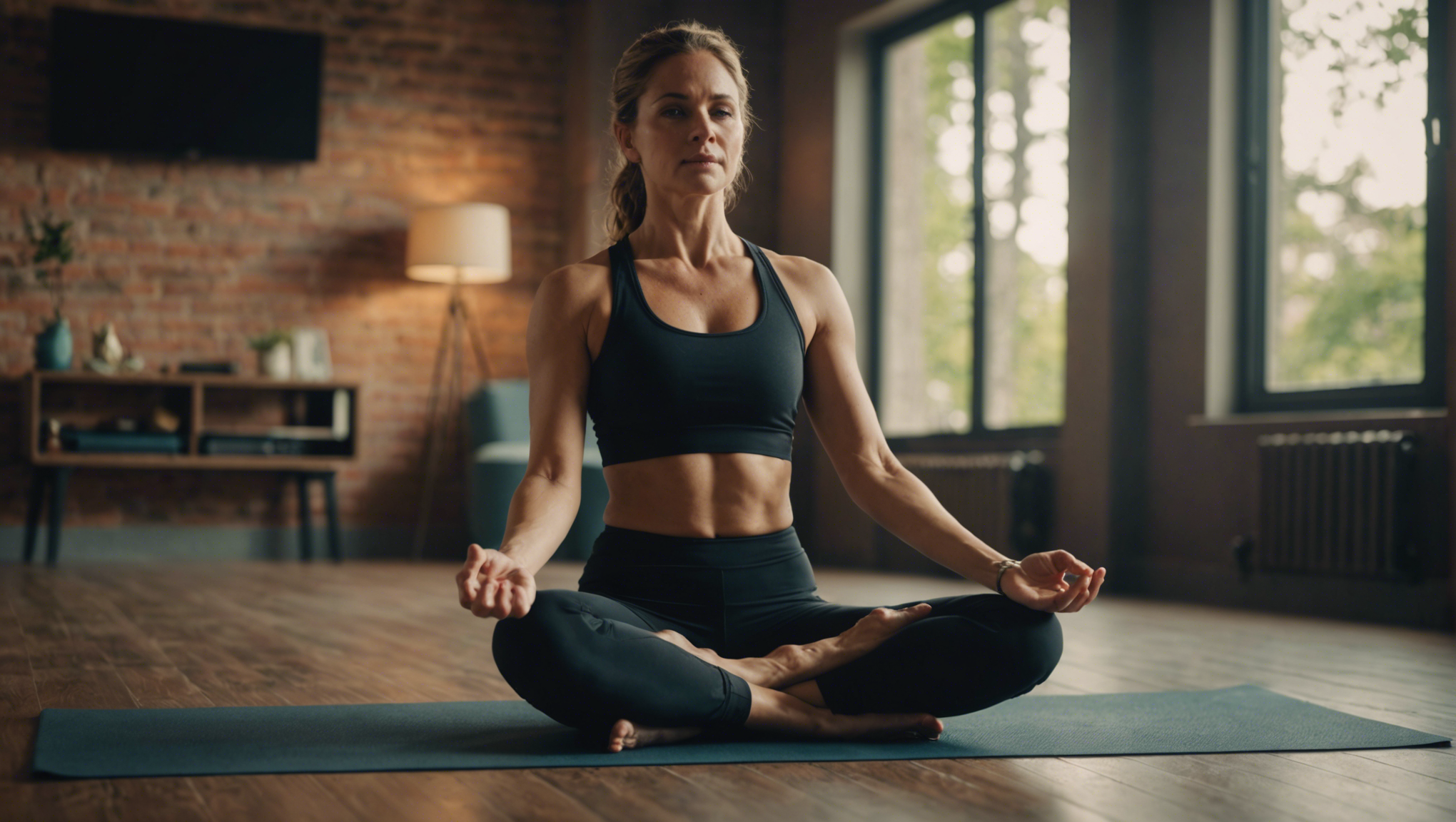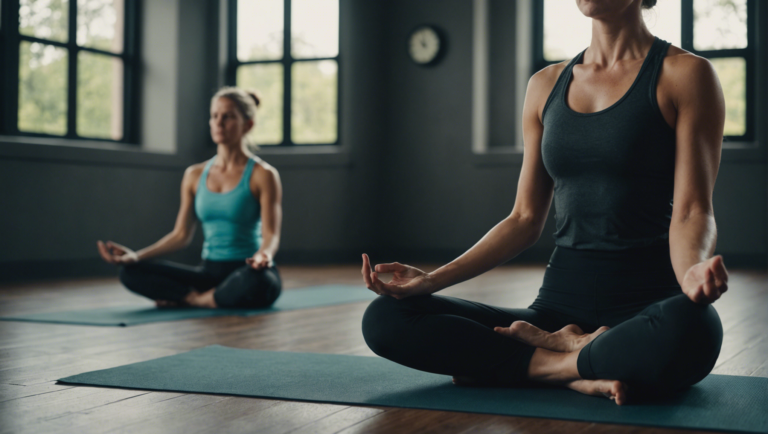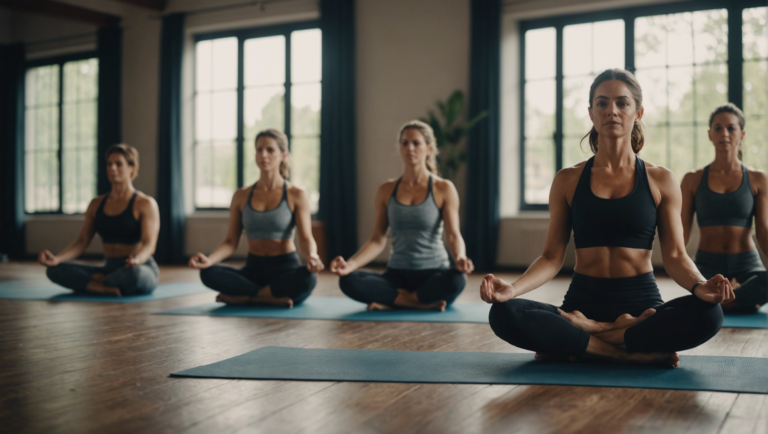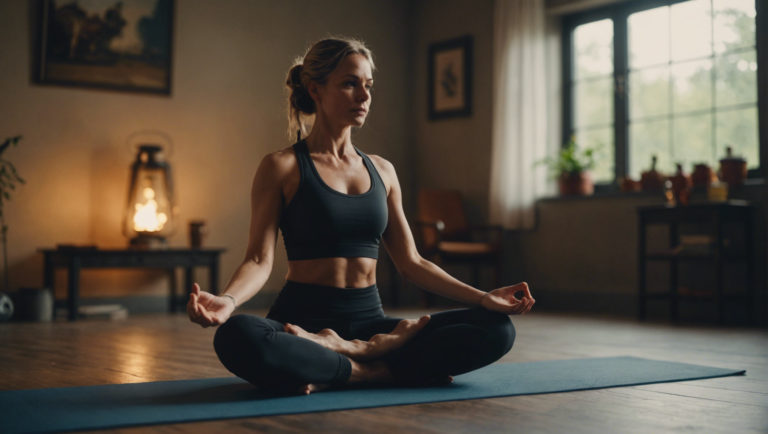Can Yoga Provide Relief For Back Pain?
Exploring the Effectiveness of Yoga for Back Pain Relief
Millions around the globe experience the debilitating effects of back pain, which can significantly impair daily activities and reduce the quality of life. Among the myriad remedies explored for alleviating back pain, yoga stands out as a holistic approach that not only addresses the physical aspects but also integrates mental well-being, thus offering a multifaceted solution to a complex problem. Through a careful analysis of yoga’s therapeutic benefits, mechanisms of action, and the role it plays in back pain management, this article provides profound insights into how this ancient practice can bring relief to those afflicted with back pain.
The Therapeutic Benefits of Yoga
Yoga, with its rich heritage, emphasizes balance, strength, and flexibility, which are crucial elements in the management and prevention of back pain. The practice encompasses various poses (asanas), breathing techniques (pranayama), and meditation practices, creating a synergy that promotes physical health and mental tranquility. For individuals suffering from back pain, yoga offers a gentle yet effective means to strengthen the muscles of the back and abdomen, increase spinal flexibility, and correct postural misalignments that often contribute to discomfort and pain.
Understanding the Mechanisms Behind Yoga’s Effectiveness
At its core, yoga influences back pain through several interconnected mechanisms. Firstly, it enhances core strength, providing the spine with greater support and reducing undue strain on the back muscles. Secondly, yoga improves flexibility, particularly in the hamstrings and hip flexors, which can mitigate factors that typically exacerbate back pain. Furthermore, the incorporation of mindful breathing and relaxation techniques aids in reducing the tension and stress that often accompany chronic pain conditions, thereby diminishing the perception of pain.
Yoga Poses for Back Pain Relief
While many yoga poses can benefit those with back pain, a few stand out for their specific therapeutic effects. Poses like the Cat-Cow stretch promote flexibility and mobility in the spine, while the Child’s Pose offers gentle relaxation and stretching for the back muscles. The Cobra Pose is renowned for strengthening the spine and relieating lower back stiffness. However, it’s paramount to approach these poses with caution, adapting them to one’s capabilities and, ideally, under the guidance of a certified yoga instructor to prevent exacerbation of pain or injury.
Scientific Evidence Supporting Yoga for Back Pain
Research underscores the validity of yoga as an intervention for back pain relief. A systematic review and meta-analysis published in prominent medical journals have reported significant improvements in pain intensity and functional ability in individuals practicing yoga compared to those engaged in minimal to no physical activities. These studies highlight yoga not only as a safe alternative but also as an adjunct to conventional medical treatments for back pain.
Embarking on a Yoga Journey for Back Pain Relief
Starting a yoga practice for back pain management requires mindfulness and patience. It’s advisable to begin with gentle, restorative yoga classes specifically designed for back health. Seeking out experienced yoga instructors who are familiar with modifications for back pain can ensure a safe and beneficial practice. Additionally, consistency is key; regular practice, coupled with awareness of one’s own body and its limits, can lead to gradual and lasting improvements in back pain.
: A Holistic Pathway to Back Pain Relief
Yoga offers a holistic and empowering approach to managing back pain, rooted in its ability to strengthen, stretch, and soothe the body and mind. As with any therapeutic regimen, the benefits of yoga for back pain relief are most pronounced with regular practice, proper technique, and a mindful awareness of one’s physical limits. Through dedication and patience, individuals suffering from back pain can harness the power of yoga to navigate their journey toward healing and improved well-being.
Anatomy of Back Pain and How Yoga Targets Key Areas
Understanding the Complexity of Back Pain
Back pain, a common ailment affecting a significant portion of the adult population worldwide, can originate from various factors such as muscle strain, ligament sprain, disc degeneration, or spinal irregularities. Its complexity lies not only in the range of underlying causes but also in how it impacts daily activities, leading to a search for effective relief methods. Amidst various treatments, yoga emerges as a holistic approach targeting the anatomy of back pain through stretching, strengthening, and stabilizing the spine and its supporting structures.
How Yoga Addresses the Musculoskeletal System
Yoga, with its multifaceted approach, directly influences the musculoskeletal system, offering relief and preventive measures for back pain sufferers. By engaging in specific asanas (poses), individuals can alleviate tension in tight areas, enhance flexibility, and fortify the muscles surrounding the spine. These practices contribute to a more balanced distribution of body weight, reducing pressure on the back and thus mitigating discomfort.
Stretching Towards Pain Relief
One compelling aspect of yoga is its capacity to lengthen and stretch muscles that are commonly tight and contribute to back pain. Poses like Uttanasana (Standing Forward Fold) and Paschimottanasana (Seated Forward Bend) target the hamstrings and the lower back, areas that often harbor tension due to sedentary lifestyles. Regularly practicing these stretches can lead to increased mobility and decreased stiffness, addressing one of the root causes of back pain.
Strengthening Core and Back Muscles
Equally important in yoga’s arsenal against back pain is the strengthening of core and back muscles. A strong core supports the spine, decreasing the likelihood of common back injuries. Asanas such as Plank Pose and Bhujangasana (Cobra Pose) are instrumental in building the endurance of these critical muscles. Through consistent practice, individuals can develop a more resilient back, capable of withstanding daily stressors without succumbing to injury.
Promoting Spinal Alignment and Health
Yoga encourages mindfulness in movement, teaching practitioners to align their bodies correctly, thus promoting spinal health. Tadasana (Mountain Pose), despite its simplicity, is a powerful practice for understanding and improving posture. It teaches alignment from the ground up, aligning the ankles, hips, shoulders, and head. Over time, this mindful alignment can correct postural imbalances that contribute to back pain, showcasing yoga’s unique approach to treating and preventing discomfort.
The Science Supporting Yoga for Back Pain Relief
Research supports the efficacy of yoga in providing relief for back pain. Studies have demonstrated that individuals who engage in a regular yoga practice experience significant reductions in pain intensity, improvements in spinal flexibility, and enhanced quality of life. By addressing both the physical and psychological aspects of back pain, yoga offers a comprehensive solution that transcends the limitations of conventional pain management strategies.
Embarking on a Yoga Journey for Back Pain Relief
Adopting yoga as a method for alleviating back pain involves starting with gentle poses and gradually progressing as flexibility and strength improve. It’s advisable to consult with healthcare providers before beginning any new exercise regimen, especially for those with existing back issues. Furthermore, seeking guidance from certified yoga instructors can ensure that practices are done safely and effectively, tailored to individual needs and capabilities.
Yoga stands out as a therapeutic tool for addressing the underlying anatomical causes of back pain through a holistic lens. Its practices, ranging from stretching tight muscles to strengthening the core and fostering spinal health, offer a path to not only relieve pain but also enhance overall physical well-being. As more individuals turn towards yoga for back pain relief, the importance of integrating mindfulness, movement, and breath into the healing process becomes clear, paving the way for a life less hindered by discomfort.
Types of Yoga Poses Ideal for Alleviating Back Discomfort
Living with back discomfort can significantly impact your daily activities, mood, and overall quality of life. Fortunately, the ancient practice of yoga offers a gentle yet effective way to alleviate back pain through targeted poses that stretch, strengthen, and relax the spine and surrounding muscles. Engaging in a regular yoga routine can not only ease current discomfort but also contribute to a healthier, more resilient back in the long run. Below, we delve into several yoga poses renowned for their ability to mitigate back pain, offering insight into how each posture supports spinal health.
Gentle Stretch with Cat-Cow Pose
The Cat-Cow sequence is a fluid movement that promotes flexibility and circulation in the spine. By alternately arching and rounding the back, this pose encourages mobility in the vertebral column, easing tension in the lower back, mid-back, and neck areas. The rhythmic motion also facilitates deeper breathing, which can further enhance relaxation and pain relief.
Strengthening Foundation with Downward-Facing Dog
Downward-Facing Dog is a cornerstone pose in many yoga practices due to its comprehensive health benefits, including back pain relief. This inverted posture elongates the spine, stretches the hamstrings, and strengthens the muscles of the back and lower body. Maintaining the pose helps to decompress the spine, offering relief from pressure and pain.
Core Engagement with Plank Pose
A strong core is vital for supporting the back and minimizing discomfort. Plank Pose is an efficient way to engage and strengthen the entire core, including the abdominals, back muscles, and obliques. A properly aligned plank pose ensures that the back is straight and supported, preventing and alleviating lower back strain.
Flexibility Boost with Cobra Pose
Cobra Pose is an effective backbend for strengthening the spine and relieving stiffness in the lower back. By gently arching the back and opening the chest, this pose facilitates spinal flexibility and encourages the release of tension in the back muscles. Regular practice of Cobra Pose can also enhance posture, further contributing to back pain reduction.
Serenity and Release with Child’s Pose
Child’s Pose is a restorative posture that offers deep relaxation for the back muscles. By folding forward and stretching the arms out in front, this pose gently stretches the back and hips while allowing the spine to decompress. Child’s Pose is not only beneficial for easing physical tension but also for calming the mind, making it an ideal practice for stress-induced back pain.
Balancing Act with Tree Pose
While not directly targeting the back, Tree Pose is influential in improving overall posture and balance, which, in turn, benefits spinal health. By focusing on maintaining balance on one foot, Tree Pose strengthens the core and leg muscles, promoting a more supportive and aligned posture. Improved alignment and core strength are essential for reducing undue stress on the back.
These yoga poses into your routine offers a holistic approach to managing back discomfort. Not only do they work to physically alleviate pain, but they also foster mental relief and stress reduction, contributing to overall well-being. As with any exercise regimen, it’s crucial to listen to your body and adjust the poses to suit your comfort level. For individuals with chronic back pain or other health concerns, consulting a healthcare professional before beginning a yoga practice is advisable. Through regular and mindful practice, yoga can become a valuable ally in your journey toward a healthier, more comfortable back.
Strengthening and Stretching: The Dual Approach of Yoga
The ancient practice of yoga, with its roots extending thousands of years back, has evolved into a holistic approach to health and wellness, blending physical postures, breath control, and meditation. Among its many benefits, yoga is renowned for its capacity to both strengthen and stretch the body, making it an exceptional choice for anyone looking to enhance their physical fitness and overall well-being. This dual approach not only improves flexibility and builds muscle strength but also plays a pivotal role in injury prevention and the management of chronic conditions.
Embracing the Balance between Strength and Flexibility
Yoga’s unique combination of stretching and strengthening exercises offers a balanced approach to fitness. Unlike conventional workouts that focus on isolating muscle groups, yoga asanas (postures) engage multiple muscles simultaneously. This comprehensive engagement promotes more harmonious muscle development and increases body awareness, aiding in the prevention of overuse injuries and muscle imbalances.
The Role of Yoga in Preventing Injuries
A significant aspect of yoga’s appeal lies in its ability to prevent injuries. By enhancing flexibility, yoga asanas make the muscles and joints more adaptable, reducing the likelihood of injuries caused by rigid muscles. Furthermore, the strengthening components of yoga fortify the muscles around critical joints, supporting them and diminishing the risk of joint injuries. This is particularly beneficial for athletes and individuals involved in repetitive physical activities.
Holistic Health Benefits Beyond Physical Fitness
Yoga transcends the mere physical, offering profound benefits for mental and emotional health. The practice of yoga has been linked to reduced stress levels, enhanced mental clarity, and improved mood. This holistic impact stems from the meditative aspects of yoga, which encourage mindfulness and present-moment awareness. Such qualities are invaluable, promoting a balanced and centered state of being that extends beyond the yoga mat into daily life.
Tailoring Yoga Practices to Individual Needs
A key strength of yoga is its versatility and adaptability to various fitness levels and needs. Whether one is a beginner or a seasoned practitioner, yoga offers a range of poses and modifications that can be adjusted to challenge the body adequately while ensuring safety. This adaptability makes yoga an inclusive practice, suitable for individuals of all ages and physical capabilities.
The Synergy of Breath and Movement
Central to yoga’s effectiveness is the synchronization of breath with movement. This synergy enhances lung capacity and improves respiratory efficiency, which significantly supports cardiovascular health. Additionally, the focus on breath work aids in cultivating an inward focus, enhancing mental concentration, and fostering a meditative state that contributes to stress reduction.
Yoga’s Contribution to Lifestyle Improvement
Integrating yoga into one’s lifestyle can lead to transformative changes. Beyond the physical benefits, practitioners often report improved sleep patterns, heightened energy levels, and a more positive outlook on life. These changes, in turn, can motivate individuals to make healthier life choices, such as adopting a nutritious diet and engaging in regular physical activity.
Yoga’s dual approach of strengthening and stretching embodies a comprehensive wellness methodology that encompasses physical, mental, and emotional health. Its practice offers a pathway to a more balanced and fulfilling lifestyle, underscoring its enduring relevance and growing popularity in the contemporary wellness landscape. As more individuals discover the multifaceted benefits of yoga, its role as a cornerstone of holistic health and well-being is poised to expand, further solidifying its position as an invaluable resource for anyone seeking to enhance their quality of life through integrated physical and mental health practices.
Personal Stories: Real-Life Impact of Yoga on Back Pain Management
Exploring the Healing Power of Yoga for Back Pain
The quest for relief from back pain leads many down a path of medical treatments, physiotherapy, and sometimes invasive procedures. However, a growing body of evidence and personal testimonies are spotlighting an ancient practice: yoga. By delving into the real-life impacts of yoga on individuals grappling with back pain, a clearer picture emerges of how this practice serves not just as a physical therapy but also as a holistic approach to wellness.
Personal Narratives Shed Light on Yoga’s Efficacy
Amid the sea of medical advice and treatments available for back pain, personal stories of those who have turned to yoga offer invaluable insights. These narratives, grounded in real-world experiences, highlight the transformative power of yoga in managing and, in some cases, alleviating back pain. By examining these accounts, we gain not only a deeper understanding of yoga’s potential benefits but also a more nuanced appreciation for its ability to address the multifaceted nature of back pain.
The Science Behind the Stretch
The mechanisms through which yoga aids in back pain relief are multifaceted, combining physical stretching, strengthening, and mindful awareness to create a powerful antidote to pain and discomfort. Through a sequence of poses, known as asanas, yoga gently stretches tight muscles, improving flexibility, and facilitating a natural realignment of the body. Simultaneously, it strengthens the core and back muscles, which are critical in supporting the spine and preventing future injury. Moreover, the emphasis on breath control and mindfulness promotes relaxation and reduces stress, factors that are often linked with chronic pain.
A Tapestry of Techniques for Diverse Needs
Yoga’s versatility lies in its vast repertoire of poses and practices, enabling individuals to tailor their practice to their specific back pain conditions. Whether it’s chronic lower back pain, sciatica, or tension resulting from poor posture, yoga offers a variety of poses and sequences that target different areas of the back. This adaptability not only makes yoga accessible to a wide audience but also allows for a personalized approach to healing and rehabilitation.
Overcoming Obstacles on the Path to Relief
Embarking on a yoga journey for back pain management is not without its challenges. It requires patience, consistency, and, importantly, guidance from experienced instructors who can ensure that poses are executed safely and effectively. For many, the physical limitations imposed by back pain can be frustrating and disheartening. However, by focusing on gradual progress and listening to their bodies, individuals often find that yoga not only alleviates their back pain but also enhances their overall physical and mental well-being.
From Skepticism to Advocacy: A Transformative Journey
Skepticism often precedes the decision to try yoga for back pain, rooted in doubts about its effectiveness or apprehension about its physical demands. However, those who take the plunge frequently emerge as its most fervent advocates. The personal growth experienced through overcoming pain and regaining mobility fosters a deep appreciation for the practice. Many go on to share their stories, hoping to inspire others to explore yoga as a viable path to back pain relief.
Nurturing a Practice for Lifelong Wellness
While the immediate goal may be pain relief, yoga invites practitioners on a lifelong journey of self-discovery and health optimization. Beyond its physical benefits, yoga teaches mindfulness, patience, and resilience—qualities that enhance one’s ability to cope with challenges both on and off the mat. As individuals integrate yoga into their daily lives, it becomes not just a method for managing back pain but a foundational element of their approach to holistic well-being.
The cumulative evidence from personal stories and scientific research underscores yoga’s potential as a meaningful tool in the management of back pain. These narratives illuminate the path for others grappling with similar issues, offering hope and a practical framework for achieving not only relief but a more balanced and healthful life.
Conclusion
Yoga, often regarded as a harmonious blend of spiritual and physical disciplines, has demonstrated remarkable effectiveness in managing and relieving back pain, an ailment that plagues a significant portion of the global population. Through a comprehensive exploration of yoga’s impact on back pain, it is evident that this ancient practice offers more than just temporary relief—it fosters a deep, rehabilitative process that can significantly enhance one’s quality of life. The anatomy of back pain is complex, involving muscles, ligaments, and vertebrae; yoga addresses these components with precision, targeting key areas to alleviate discomfort and improve overall spinal health.
Particularly noteworthy is how yoga employs a dual approach of strengthening and stretching. This method not only addresses the immediate symptoms of back pain but also works on the underlying causes. By strengthening the core, back, and abdominal muscles, yoga enhances spinal support and posture. Concurrently, stretching reduces muscular tension, increasing flexibility and mobility. This holistic approach ensures that relief from back pain is both comprehensive and sustainable.
The types of yoga poses ideal for alleviating back discomfort — such as the Cat-Cow, Child’s Pose, and Cobra Pose — are accessible to practitioners of all levels. These poses are carefully designed to decompress the spine, stretch the back muscles, and enhance circulation to the affected areas. Integrating these poses into a regular practice can significantly mitigate the discomfort associated with back pain.
Moreover, the personal stories of individuals who have turned to yoga for back pain management serve as compelling testimonials to its effectiveness. These real-life impacts underline the transformative power of yoga, not just as a physical practice but as a lifestyle change. Individuals recount remarkable improvements in pain management, mobility, and overall well-being, which attest to the holistic benefits of incorporating yoga into one’s life.
Yet, it is essential to approach yoga with awareness and guidance, especially when dealing with back pain. Consulting with healthcare professionals and experienced yoga instructors can ensure that the practice is both safe and beneficial. Tailoring the yoga practice to fit one’s specific needs and limitations can lead to more effective outcomes and prevent further injury.
Yoga transcends being a mere form of exercise; it is a journey towards a healthier spine and a more balanced life. It offers a sanctuary for those suffering from back pain, providing a pathway to recovery that is gentle, yet profoundly transformative. The incorporation of yoga into daily routines can serve as a preventive measure, safeguarding against future spinal issues while enhancing overall physical and mental health.
The insights into yoga’s therapeutic capabilities offer promise and inspiration to those seeking relief from back pain. This ancient practice, steeped in wisdom and nurtured through centuries of refinement, stands out as a beacon of hope for many. It underscores the incredible capacity of the human body to heal and the power of integrative, natural approaches in achieving health and harmony.
The narratives and analysis presented illuminate yoga not only as an effective remedy for back discomfort but also as a lifestyle choice that promotes a holistic sense of well-being. Through disciplined practice and mindful engagement with yoga, individuals can embark on a fulfilling journey toward alleviating back pain and, importantly, rediscovering the joy of movement. In embracing yoga, one opens the door to a life less hindered by discomfort, characterized by greater flexibility, strength, and peace—both physically and emotionally. As testimonials and studies continue to support yoga’s benefits, it stands as a compelling, accessible, and profoundly beneficial approach to managing back pain and enhancing life quality.



